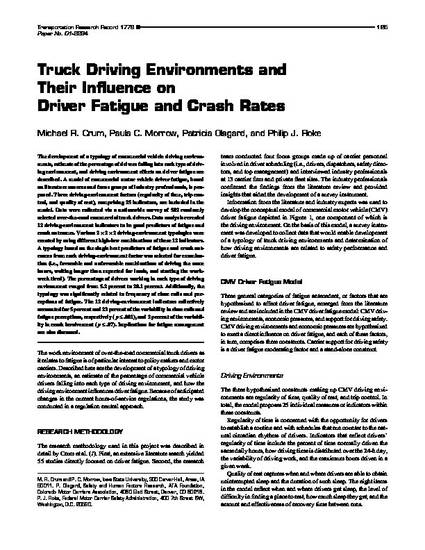
The development of a typology of commercial vehicle driving environments, estimate of the percentage of drivers falling into each type of driving environment, and driving environment effects on driver fatigue are described. A model of commercial motor vehicle driver fatigue, based on literature sources and focus groups of industry professionals, is proposed. Three driving-environment factors (regularity of time, trip control, and quality of rest), comprising 25 indicators, are included in the model. Data were collected via a nationwide survey of 502 randomly selected over-the-road commercial truck drivers. Data analysis revealed 12 driving-environment indicators to be good predictors of fatigue and crash outcomes. Various 2x2x2 driving-environment typologies were created by using different high-low combinations of these 12 indicators. A typology based on the single best predictors of fatigue and crash outcomes from each driving-environment factor was selected for examination (i.e., favorable and unfavorable combinations of driving the same hours, waiting longer than expected for loads, and starting the workweek tired). The percentage of drivers working in each type of driving environment ranged from 5.2 percent to 20.1 percent. Additionally, the typology was significantly related to frequency of close calls and perceptions of fatigue. The 12 driving-environment indicators collectively accounted for 5 percent and 23 percent of the variability in close calls and fatigue perceptions, respectively (p ≥ .001), and 2 percent of the variability in crash involvement (p ≥ .07). Implications for fatigue management are also discussed.
Available at: http://works.bepress.com/michael_crum/10/

This article is from Transportation Research Record: Journal of the Transportation Research Board 1779 (2001): 125, doi:10.3141/1779-17.